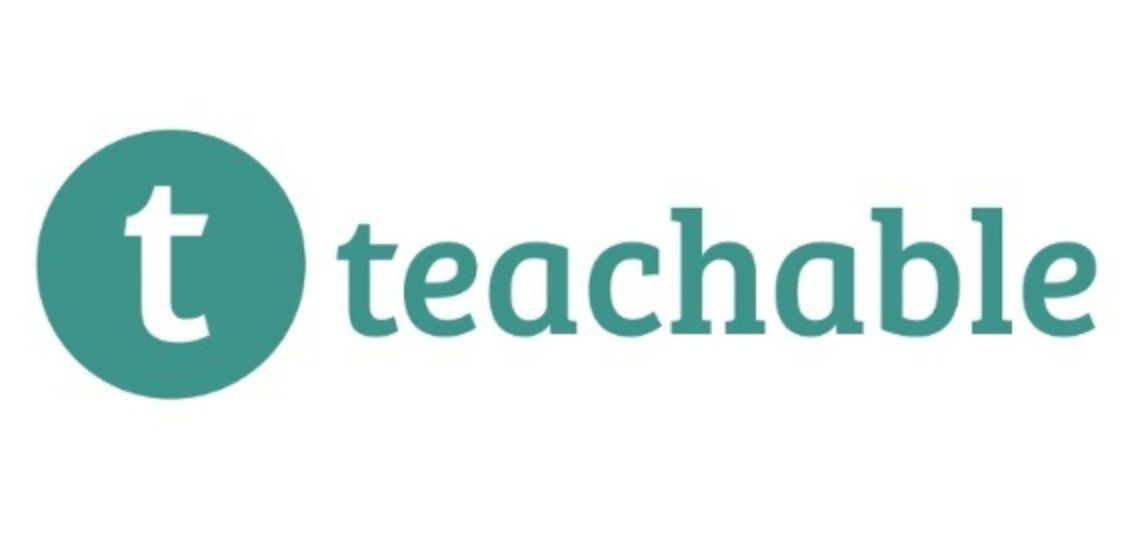Online courses are a source of passive income. You can sit back and relax after setting everything up and it’s all good to go and watch while your product earns income for you. If you can’t advertise your product yourself, you can create affiliate programs in return for a commission.
When creating and selling online courses, your platform of choice has to be simple and user friendly. After all, we wouldn’t want to divert too much valuable time handling the technical elements of the site.
Students want the ease of access, instant reach to world-class educational content, and learning at their own pace. With that said, as course founders, obviously, we would like to make it happen for them and our business.
Thus, to help narrow your choices, we’ll examine how Teachable holds up against five other online learning platforms for this article.

Before you go on, you may want to watch this video by Roberta West on YouTube that gives a quick review. After, you will want to read the rest of our article for a more comprehensive review of Teachable.
Teachable vs. Thinkific Teachable Vs Thinkific Blog Feature
There are many features that overlap between Teachable and Thinkific. Both are always competing with each other using their features and prices.
Known to be very beginner-friendly, Teachable wins the round for ease of use. It is simple to navigate through the system which is very helpful for those with minimal tech experience. They may set up their website in no time. No expertise in coding is needed for this.
Their drag and drop editor allows the user to change their site layout and add all kinds of content. Teachable supports all sorts of multimedia content- videos, surveys, and discussions, among others. Course creation is easily customizable. You can even create lessons for getting assignments and projects.
Certain navigational features of Teachable place it higher in my books. For example, you can change the setting for many courses on a single page. Thinkific cannot do the same. For the same purpose, you would need to go into the backend of each class individually.
In regards to site building, Thinkific offers you many themes with many styles. You can choose whichever would suit your branding the most.
Talking about analytics, both programs are head to head when it comes to tracking students’ status or leveraging data analytics to optimize marketing campaigns. Teachable, however, has an in-built attributes which include affiliate programs and payouts and provide customized pricing plans to your students. Promotional offers can also improve your student conversion rate.
While Thinkific also offers subscriptions, affiliates, discounts, and the like, Teachable has a more straightforward check-out procedure. Before accessing the payment page, buyers need to create accounts in Thinkific first, which could simplify the process to maximize conversion rates.
If you’re looking for something with more flexibility on course creation, student participation, and ease of use, try Teachable. Thinkific is a fantastic alternative if you’re prioritizing custom branding and site capabilities.
Teachable vs. Kajabi
Kajabi is an “all-in-one” online learning platform. Course production, memberships, email advertising, pipelines, sales, and sales funnels, to name a few, are what it deals with. Whereas, Teachable is mainly an online course creation platform.
With Kajabi, you may decide on a web site, including a blog full of customizable alternatives. The broad assortment of options for customizing might be overwhelming as a beginner. If you are not into coding, even more so. Kajabi does supply a comprehensive library with tutorials about how to navigate the platform and how to get started.
Kajabi is excellent for experienced users who’ve already had experience creating online courses. It has much to offer in terms of flexibility and customization.
Teachable’s set-up is pretty straightforward and intuitive. It offers many different options that will fit any program type. So, you can take a look at its features with its free 14-day trial before committing.
Teachable offers multiple classes and students in their plans. If you have more than 1 bundle or product to sell, you could also sell them as a package to boost your revenue. Even on their higher plans, you’re limited on the number of courses and students to own with Kajabi.
Kajabi shines with its advertising feature. It provides various marketing support such as sales funnels, pipelines, and automation, being faithful to it being an “all-in-one” platform.
Now, do take note that Kajabi is on the higher end of the line. It is almost 3x the price of Teachable.
However, do also consider the size and type of company you have aside from its price point. Kajabi makes sense for more prominent businesses and companies that want to have a platform to look after their technical and marketing requirements. For smaller companies, Teachable is perfect, especially if you have already secured some features like a full-fledged autoresponder and landing pages for your website. You can easily incorporate your website and email marketing list into this.

> > Click Here to Sign Up for Free in Teachable < <
Teachable vs. Udemy
Both Teachable and Udemy are well-known as easy-to-use platforms.
Are you looking to develop your branding and personalize your webpage? Teachable lets you have complete control over how you create your course. You can have your website be a subdomain by Teachable, or you can create a personalized domain.
When you get Udemy’s homepage, you will find it more geared toward the student. You will see links for becoming an instructor or using Udemy to your organization if you scroll towards the bottom of the page. You are restricted to Udemy’s branding. You cannot change the design of your page. You would also need to fulfill certain criteria for your courses to be printed which may be annoying and tiresome.
Now, Udemy provides a marketplace for your courses. If you’re looking for a site which could host classes you have already established, Udemy makes sense as a decision. It can advertise your courses to its viewers, which Teachable does not supply. However, as it sells your classes, it would advertise your competition’s courses too.
You may decide on pricing and discounts for your courses with Teachable. Whereas with Udemy, course pricing has to be between $20-200 dollars, and it automatically discounts your classes.
Udemy requires a certain percentage of your course revenue with them, but you would have limited control over the course and merchandise pricing, promotions, access to student information, etc. If you want something cheap and easy to get started with, Udemy is a fantastic option. If you’re searching for something that gives you complete control over every aspect of creating and selling online classes and is excellent for running a business, have a look at Teachable.
Teachable vs. Podia
Teachable and Podia are at similar price points for the features they offer.
Podia itself is quite easy to use. Selling courses and marketing can be handled through Podia itself. There is no need for extra expenditures for different integrations.
Even if you don’t have previous knowledge in them, you can personalize your sales and storefronts throughout the Podia Editor. Like Teachable, the user interface is intuitive, and it uses a “drag and drop” method. Unlike Teachable, however, you might observe that storefronts look like their customization features are restricted.
Both Podia and Teachable offer memberships. So, you don’t need to seek another 3rd party for this. But, it starts at $39 for Podia and $79 for Teachable. Podia doesn’t charge extra transaction fees.
You may enjoy Teachable’s features more if you’re focused on a much better learning experience for your students. It will give you the tools you will need to customize your content and provide your students a more engaging learning experience. It provides graded quizzes, course completion certificates, and course compliance. These, in turn, inspire your student to finish the course and contribute to your course’s success rates.
If you wish to focus on the marketing side, Podia includes automated drip email campaigns, entire sales funnels, and total revenue metrics, to name a few. These features allow you to easily communicate with your students and grow your email with no extra cost incurred.
Both Podia and Teachable provide a free 14-day trial. So, you can take a look at its features before committing.
So to make it easier, consider this, if you’re looking for a platform that could run your company from course creation to the marketing aspect for a fair price, Podia is the obvious choice for you.
If you’re somebody who values your students’ learning experience and wishes to explore the online course company, Teachable is for you.

> > Click Here to Sign Up for Free in Teachable < <
Teachable vs. Teachery
Teachable is one of the most visually attractive platforms out there. Like Teachable, Teachery intended to be an easy-to-use online learning platform that can help you start your business without too much fuss. Teachable Vs Thinkific Blog Feature
There are no limitations on the number of courses and students as you would like for the same price.
There are two-course templates you can choose from to customize according to your requirements. You can change the text, add pictures, videos, and other presentations. There are a number of things to note, however. Teachery does not host videos. You can host them on other websites like YouTube, Vimeo, or Google Drive and embed them into your pages.
On the other hand, Teachable hosts unlimited video for your online courses. No added cost is needed.
Teachery does not provide quizzes, surveys, and certificates which may improve student engagement. You also cannot provide unbranded courses. Teachable Vs Thinkific Blog Feature
The Teachery logo is always seen at the bottom of all your pages. With Teachable, you can produce your custom domain name and develop your branding.
Both Teachable and Teachery accept payments in a variety of ways. They have an affiliate program to improve sales, analytics to view pupils’ engagement status, and Teachery provides these reports in easy-to-understand visuals.
Lastly, let’s talk about price. While Teachery offers all of its features in a single paid plan, some of Teachable’s attributes are in a higher-paid program. However, Teachable does not have transaction fees.
Therefore, if you’re looking for a reasonably-priced beginner-friendly platform or don’t need advanced automation and email marketing, Teachery might be for you.
For unlimited video hosting, students, classes, email advertising, and other features, try Teachable.

> > Click Here to Sign Up for Free in Teachable < <
Final Verdict Teachable Vs Thinkific Blog Feature
When it comes to entering a company, we all want to have a relatively straightforward and streamlined procedure. But when it comes to picking out the ideal platform, it all depends on what you require.
Teachable is an excellent option for entrepreneurs that are just starting. If you currently have a site, blog, and mailing list and want to focus on giving students a great learning experience with not a great deal of fuss, go for it. It has a range of features which you’ll surely enjoy, which come at a reasonable price.
Needless to say, test the waters and check out which features you need. Hopefully, this report has helped you in making the best choice for your small business.

